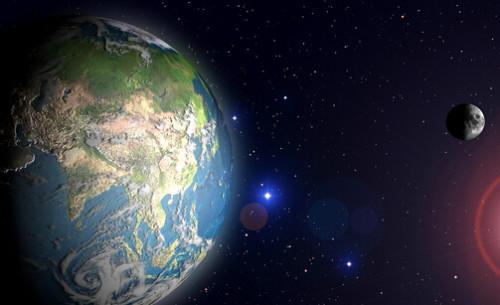It was equally dismissive of convection and seafloor spreading. And in Basin and Range, published in 1980, John McPhee noted that even then one American geologist in eight still didn't believe in plate tectonics.
它同样不承认对流理论和海床扩展理论。在1980年出版的《海洋与山脉》一书中,约翰·麦克菲指出,即使到了那个时候,每8名美国地质学家中仍有1名不相信板块构造学说。
Today we know that Earth's surface is made up of eight to twelve big plates (depending on how you define big) and twenty or so smaller ones, and they all move in different directions and at different speeds. Some plates are large and comparatively inactive, others small but energetic. They bear only an incidental relationship to the landmasses that sit upon them.
今天,我们知道,地球表面是由8─12个大的板块(取决于你怎么界定大小)组成的;它们都在以不同的速度朝不同的方向移动。有的板块很大,不大活跃;有的很小,但能量很大。它们与所在陆块只有一种附带关系。

The North American plate, for instance, is much larger than the continent with which it is associated. It roughly traces the outline of the continent's western coast (which is why that area is so seismically active, because of the bump and crush of the plate boundary), but ignores the eastern seaboard altogether and instead extends halfway across the Atlantic to the mid-ocean ridge. Iceland is split down the middle, which makes it tectonically half American and half European. New Zealand, meanwhile, is part of the immense Indian Ocean plate even though it is nowhere near the Indian Ocean. And so it goes for most plates.
比如,北美板块比跟它有关的大陆要大得多。它大致沿着该大陆的西海岸伸展(由于板块边界上的磕磕碰碰,因此那个地区经常发生地震),但与东海岸完全没有关系,而是越过大西洋的一半路程,抵达大西洋中部的山脊。冰岛从中间一分为二,在板块上一半属于美洲,一半属于欧洲。与此同时,新西兰是巨大的印度洋板块的组成部分,虽然这个国家远离印度洋。大多数板块都是这种情况。
The connections between modern landmasses and those of the past were found to be infinitely more complex than anyone had imagined. Kazakhstan, it turns out, was once attached to Norway and New England. One corner of Staten Island, but only a corner, is European. So is part of Newfoundland.
人们发现,现代陆块和古代陆块之间的关系,比想像的要复杂得多。哈萨克斯坦原来一度与挪威和新英格兰相连。斯塔腾岛的一角,仅仅是一角,属于欧洲。部分纽芬兰也是。













